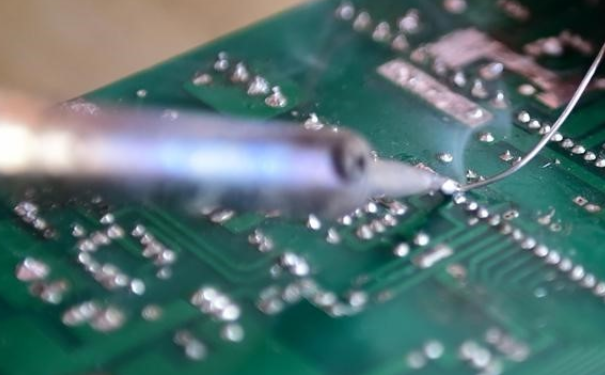Basic knowledge and precautions of electronic components welding
Date:2023-02-03 18:05:53 Views:2489
Electronic components are the components of electronic components and small electrical machines and instruments. They are often composed of several parts and can be used in similar products; It often refers to some parts of electrical appliances, radio, instruments and other industries, such as capacitors, transistors, hairspring, spring and other sub-devices. Next, Chuangxin website will introduce you some key points about the welding of electronic components.
Electronic components are the cells of electronic information equipment, and board-level circuit assembly technology is the basis of manufacturing electronic equipment. The emergence of different types of electronic components will always lead to a revolution in board-level circuit assembly technology. Welding components with electric soldering iron is a basic assembly process, which plays a key role in ensuring the quality of electronic products.

(1) Resistor welding
Install the resistor in the specified position according to the drawing. The mark shall be upward and the word direction shall be consistent. After installing the same specification, install another specification, and try to make the height of the resistor consistent. After welding, cut off the redundant pins exposed on the surface of the printed circuit board.
(2) Capacitor welding
Install the capacitor in the specified position according to the drawing, and note that the "+" and "-" poles of the polar capacitor cannot be wrongly connected, and the direction of the mark on the capacitor should be visible. Install glass glaze capacitor, organic dielectric capacitor and ceramic dielectric capacitor first, and then install electrolytic capacitor.
(3) Welding of diode
Attention shall be paid to the following points in diode welding: 1. Pay attention to the polarity of anode and cathode, and do not install it incorrectly; 2. The model mark shall be easy to see; 3. When welding vertical diodes, the welding time for short leads shall not exceed 2s.
(4) Triode welding
Pay attention to the correct insertion of e, b and c leads; The welding time shall be as short as possible. When welding, clamp the lead pin with tweezers to facilitate heat dissipation. When welding high-power triode, if it is necessary to add heat sink, the contact surface should be flat and polished before fastening. If it is required to add insulating film, do not forget to add film. When the pin needs to be connected with the circuit board, plastic wire should be used.
(5) IC welding
First, check whether the model and pin position meet the requirements according to the drawing requirements. When welding, first weld the two pins along the edge to make them positioned, and then weld them one by one from left to right from top to bottom.
The redundant pins of capacitor, diode and triode exposed on the printed circuit board shall be cut off at the same root.
Welding precautions:
1. The best welding method is rosin, rosin oil or acid-free flux. Do not use acid flux, otherwise the welding place will be corroded.
2. Before welding, scrape the place to be welded with a knife to make it show metallic luster, apply flux and then apply a layer of soldering tin.
3. During welding, the electric soldering iron should have enough heat to ensure the welding quality and prevent false soldering and long-term desoldering.
4. The soldering iron should not stay at the welding place for too long.
5. After the soldering iron leaves the welding place, the parts to be welded cannot be moved immediately, otherwise the parts will be easily desoldered because the soldering tin has not solidified.
6. It is better to twist and then tin the components to be connected.
7. When welding transistors and other devices that are afraid of high temperature, it is best to use small flat-nosed pliers or tweezers to clamp the lead leg of the transistor. It is also necessary to grasp the time when welding.
8. It is better to use thinner low-temperature welding wire for the welding of semiconductor components, and the welding time should be short.
The above is the relevant content of "Basic knowledge and precautions of electronic components welding" brought by this core detection. I hope it can help you. We will bring more wonderful content later. The company's testing service covers: electronic component testing and verification, IC authenticity identification, product design material selection, failure analysis, functional testing, factory incoming material inspection, tape weaving and other testing items. Welcome to call Chuangxin Testing, we will serve you wholeheartedly.




 Weixin Service
Weixin Service

 DouYin
DouYin
 KuaiShou
KuaiShou





















